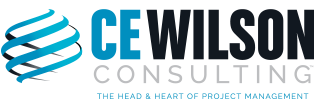Project management is more than just a beneficial skill; it’s a core competency that benefits…

Change Can Be Good! Consider These Questions Ahead of Implementing Your Change Management Strategy
It’s interesting that something as inevitable as change causes many of us so much anxiety. We often resist or push back against change, when in reality it’s necessary for our growth and progress, as well as the progress of organizations.
Change management is the process of assessing the impact of change and ensuring that the organization is ready for the ‘new reality’ it will bring.
It is a very important step in implementing any new project, policy, or organizational change, but is often overlooked or left as an afterthought or addressed too late. The truth is, the process of change management should begin at the start of any new project, and doesn’t end until after project implementation.
Take a look at these questions you need to consider when determining how to implement the change management on your project.
Who manages change management?
If you are working with a project manager throughout the project, part of his or her role is to facilitate change management. You may also choose one person or a subset of people from the larger project team to handle it. The important thing to remember is no matter who you choose, they should be familiar with all aspects of the project, understand the culture and be excited to take on the task.
Is change management a one-time initiative or is it ongoing?
As mentioned previously, change management should start with the beginning of a project and be integrated throughout the process until after roll-out. It’s all about outlining the plan and keeping people updated. Effective communication is the cornerstone of successful change management.
What needs to be communicated as part of change management?
The specifics will vary by project, but the basic framework for communication includes:
- Determining your internal and external stakeholders and their role
- Defining the impact of the change on each stakeholder role. For example, will the change impact their organizational structure, their role, processes or tools they use to perform their activities?
- Deciding at what point in the project they need to start being informed and what milestones they need to be informed about
- Tailoring the amount of communication so people are getting all necessary information but aren’t operating on information overload. Small bits of information are easier to digest than large chunks.
- Determining when various stakeholders require communication or training on the new change
- Determining ‘what’ needs to be communicated and why. Include information on what you want them to do about the change (e.g. attend training sessions, be involved in user acceptance testing, review updated user manuals or SOPs). Everyone wants to know what it is they are expected to do as a result of the pending change. Tell them and tell them before the change happens.
- Defining what communication tools will you use (e.g. status reports, project intranet site, monthly town halls, newsletters).
- Determining how you will measure the success of your change management strategy. What qualitative and quantitative success measures will you use and at what stages of the initiative will you measure them?
How do I keep track of change management activities?
You should start with creation of a change management plan that captures all elements of your change management approach including your answers to all the bullets above. Keep this document updated. Incorporate change management activities into your project schedule or project work plan, and execute against it throughout the engagement.
How long should we continue to manage the change after the project is finished?
Many variables can affect this, so there aren’t any hard and fast rules. But three months is generally a long enough timeframe to begin determining whether a change has been managed successfully. Provide a feedback loop to continuously monitor the new processes, and give those affected by the change a voice in the process.
How do I tell change management has or has not been successful?
You know your change management has been successful when your stakeholders know what is coming and are properly trained for it when it arrives. If any stakeholders are surprised by what’s happening or what is expected of them as a result of the change, that’s a sign of ineffective change management.
Continuously refer back to the quantitative and qualitative success measures that you defined during your change management planning. Assess how you measure up and make plans to improve on the areas that aren’t reaching those metrics.
People in your organization may view change as annoying, intimidating and unnecessary, or energizing, intriguing and exciting. It all depends on how it’s presented, and with good change management, you have the power to make change a positive and productive experience for everyone involved.




